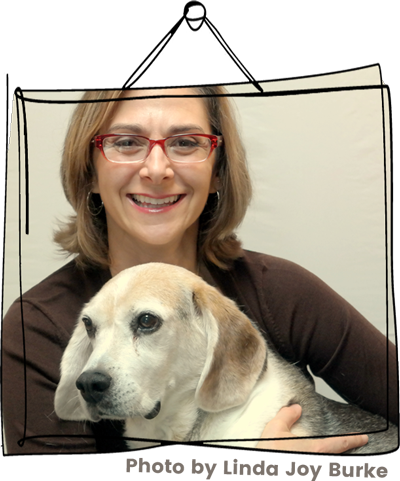 It’s Day 28 of our #WaterPoemProject — 30 days of water-themed poetry prompts from your favorite children’s authors. We are down to the last few days of our project.
It’s Day 28 of our #WaterPoemProject — 30 days of water-themed poetry prompts from your favorite children’s authors. We are down to the last few days of our project.
If you’re looking for National Poetry Month writing prompts, we’ve got you covered. Start with Day 1 and you’ll have poetry prompts from now through the end of April.
New to this project? Please read the Introduction and FAQ. Or you can watch this video of me describing how to participate. It’s on the YouTube channel Authors Everywhere.
I am happy to welcome my dear friend, poet and educator Heidi Mordhorst, to share a water-themed writing prompt with us today.
Heidi’s prompt is: Try a Definito!
In my own work, I usually write in free verse, but poetic forms certainly have their uses. A poetic form is like a recipe for constructing a poem: each form has rules for how many words or lines or stanzas, or where the rhymes should fall, or what the rhythm should be.
Poetic forms are as various as the languages on earth and the purposes to which poetry is put. I especially love that although some well-known poetry forms are old and even ancient (sonnet, haiku and triolet), many are newly created by poets who “discovered” a form lurking in their own work. Terrance Hayes’s Golden Shovel form, invented in 2010 , Marilyn Singer’s reverso form introduced also in 2010, and the Skinny, invented by Truth Thomas in 2005, have all inspired poets everywhere to try their own versions. As this Water Poem series proves, poets are a game bunch fascinated by all ways of playing with words. Show us a new form and we’ll run with it!
I hope you’ll do the same with my own invention, a poetic form called the definito. I’d written a number of these over the years before I attempted to define the definito; here are the rules I settled on recently. To stay true to myself, my poetic form is a free verse form!
The definito is a free verse poem of 8-12 lines that highlights wordplay as it demonstrates the meaning of a less common, often abstract word, which always ends the poem.
Here’s an example of an early definito.
IMMACULATE
not a
smudge of mud
not a
jot of rot
just
tulip leaves of clean green
just
tulip petals, pure sheen
mingling their
singular spotless hues
immaculate
©Heidi Mordhorst 2008
Although the definito is a free verse form—meaning you get to choose line length, whether it’s metered or not, whether to rhyme or not—you are constrained to 12 lines and the last word of the poem is the one you are defining. (It’s also the title.) The layout of the poem highlights its use repetition, alliteration, assonance, consonance and rhyme.
There are a thousand water words that could become the subject of a definito, but also up for grabs are the thousand words that might describe water. Here’s one from last year.
PLACID
imagine a place
a lake perhaps
unruffled by ripples
untroubled by tides
a place of peace and quiet blue
stand and survey
the way that calm
skims over the surface–
placid.
©Heidi Mordhorst 2019
In general, I’m aiming my 8-12 lines at readers 8-12 years old, but you don’t have to narrow your audience that way. It’s just that brains that age are newly wrapping their heads around abstract concepts and coming across new vocabulary several times a day, we hope!
Here are a few water words and modifiers to get you started, but hey—you’re poets. Run with it!
| brackish | riparian | levee |
| sluice | alluvium | percolation |
| fjord | impermeable | turbulent |
***
The finish line is in sight, poets! Pick a water-related word and try a definito poem by the end of the day tomorrow, Sunday, April 18, 2020.
If you’re doing the #WaterPoemProject with a group, be sure to share or post your rough draft, read other people’s poems, and cheer for their efforts. Or leave your poem here, in the comments.
Heidi Mordhorst is a poet, teacher, and poetry teacher. An active member of the online Poetry Friday community, Heidi is the author of two collections of poetry for young people, SQUEEZE: POEMS FROM A JUICY UNIVERSE and PUMPKIN BUTTERFLY: POEMS FROM THE OTHER SIDE OF NATURE (both Wordsong/Boyds Mills) and numerous poetry anthologies including THE POETRY OF US (ed. J. Patrick Lewis), POEMS ARE TEACHERS (Amy Ludwig VanDerwater) and the forthcoming A DAY IN THE LIFE OF MATH, edited by the late Lee Bennett Hopkins. Heidi blogs regularly at my juicy little universe; her project for National Poetry Month 2020 is to present on video one of her published poems each day in April. She’s looking for a literary agent.
***
 #WaterPoemProject Series Posts:
#WaterPoemProject Series Posts:
Project Introduction
FAQ
Prompt 1: Irene Latham, The Language of Water
Prompt 2: Elizabeth Steinglass, What Would a Raindrop Say?
Prompt 3: Linda Mitchell, Found Haiku
Prompt 4: Shari Green, Fogbow Fibonacci
Prompt 5: Margaret Simon, The Taste of Water
Prompt 6: Heather Meloche, The Shape of a Wave
Prompt 7: Amy Ludwig VanDerwater, A Water Memory
Prompt 8: Laura Shovan, Rainy Day Opposites
Prompt 9: Kathryn Apel, Silly Solage
Prompt 10: Buffy Silverman, A Watery Home
Prompt 11: Kara Laughlin, Frozen Fog
Prompt 12: Debbie Levy, Jump into a Limerick
Prompt 13: Joy McCullough, What Are Water Bears?
Prompt 14: Linda Baie, Frozen Water Skinny
Prompt 15: Chris Baron, The Hidden World of Water
Prompt 16: Michelle Heidenrich Barnes, Water Wordplay
Prompt 17: Susan Tan, The Sound of Water
Prompt 18: Mike Grosso, Waterplay!
Prompt 19: R. L. Toalson, Wishing Well
Prompt 20: Margarita Engle, Ode to the Shore
Prompt 21: Faye McCray, Poem in a Bubble
Prompt 22: Meg Eden, Surprising Connections
Prompt 23: Beth Ain, Water with Salt
Prompt 24: Kevin Hodgson, A Poem about Peepers
Prompt 25: Laura Purdie Salas, Be a Snow-Maker!
Prompt 26: Amanda Rawson Hill, Where Does Water Come From?
Prompt 27: Nikki Grimes, Word? Play!
Prompt 28: Heidi Mordhorst, Try a Definito!
Please support the #WaterPoemProject authors by buying their books from your favorite independent bookstore.







I took brackish because that is the kind of water in the swamp.
Not fresh
Not sea
the amphibian of wetlands
holding salt
in a teaspoon of muddy bottom water
overflowed from ocean
lacking tidal swirl,
slapping into swamps…
brackish.
ooooh, the amphibian of wetlands…love that.
and, in a teaspoon of muddy bottom water.
Great description.
[…] part of Laura Shovan’s Water Poetry Project, I was introduced to a definito, a poetry style created by Heidi Mordhorst. Heidi defines definito […]